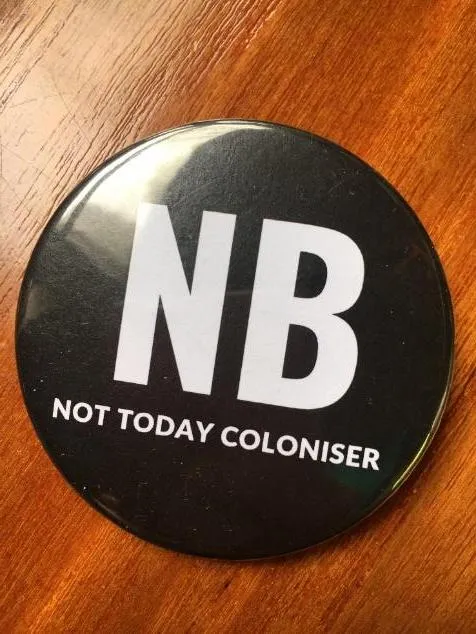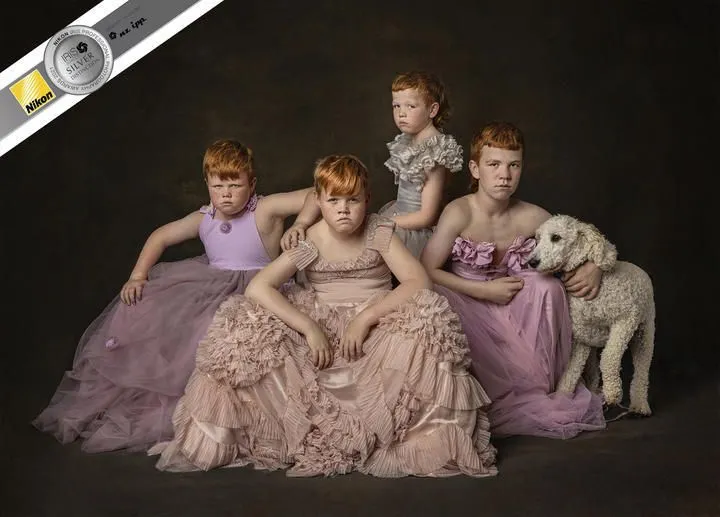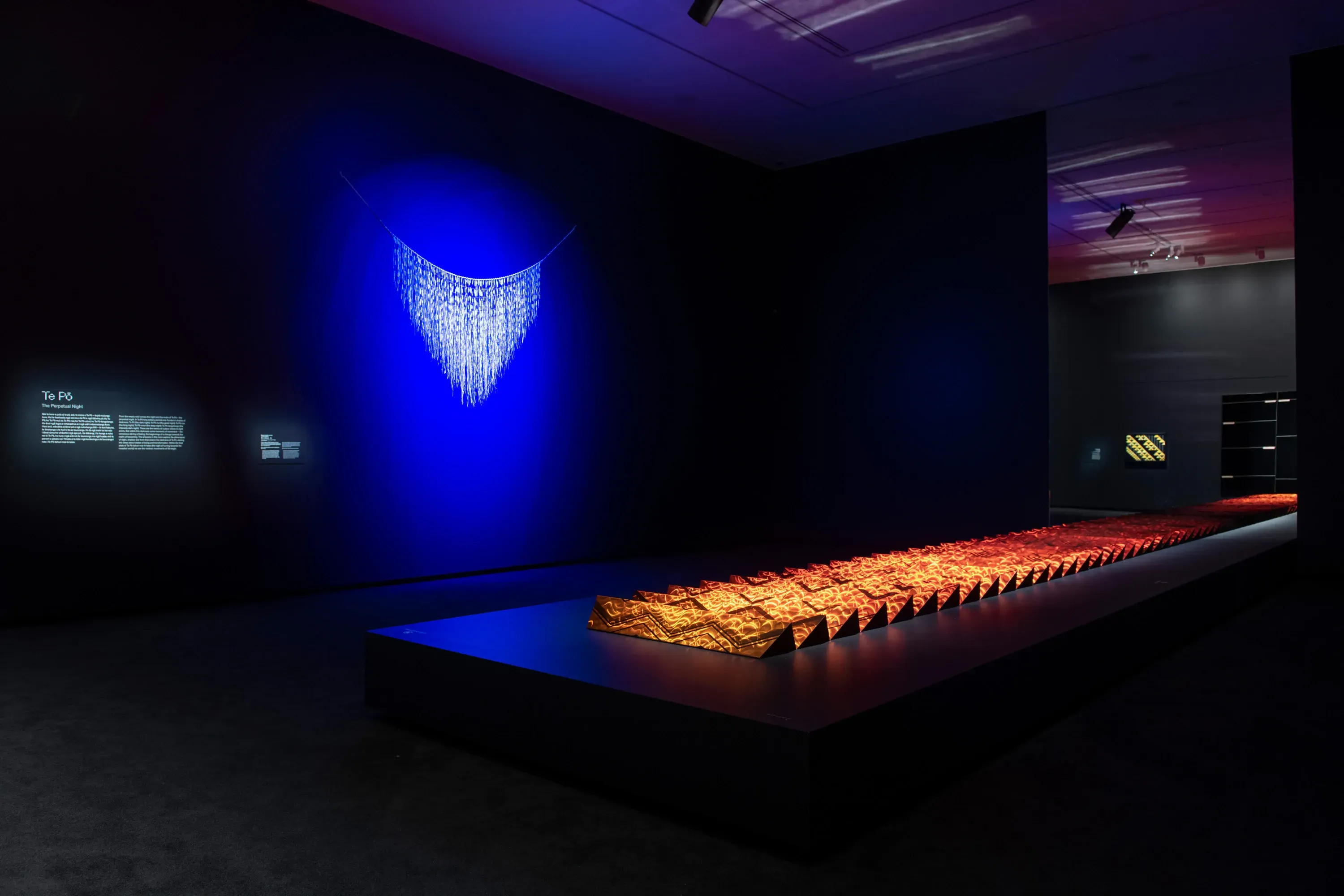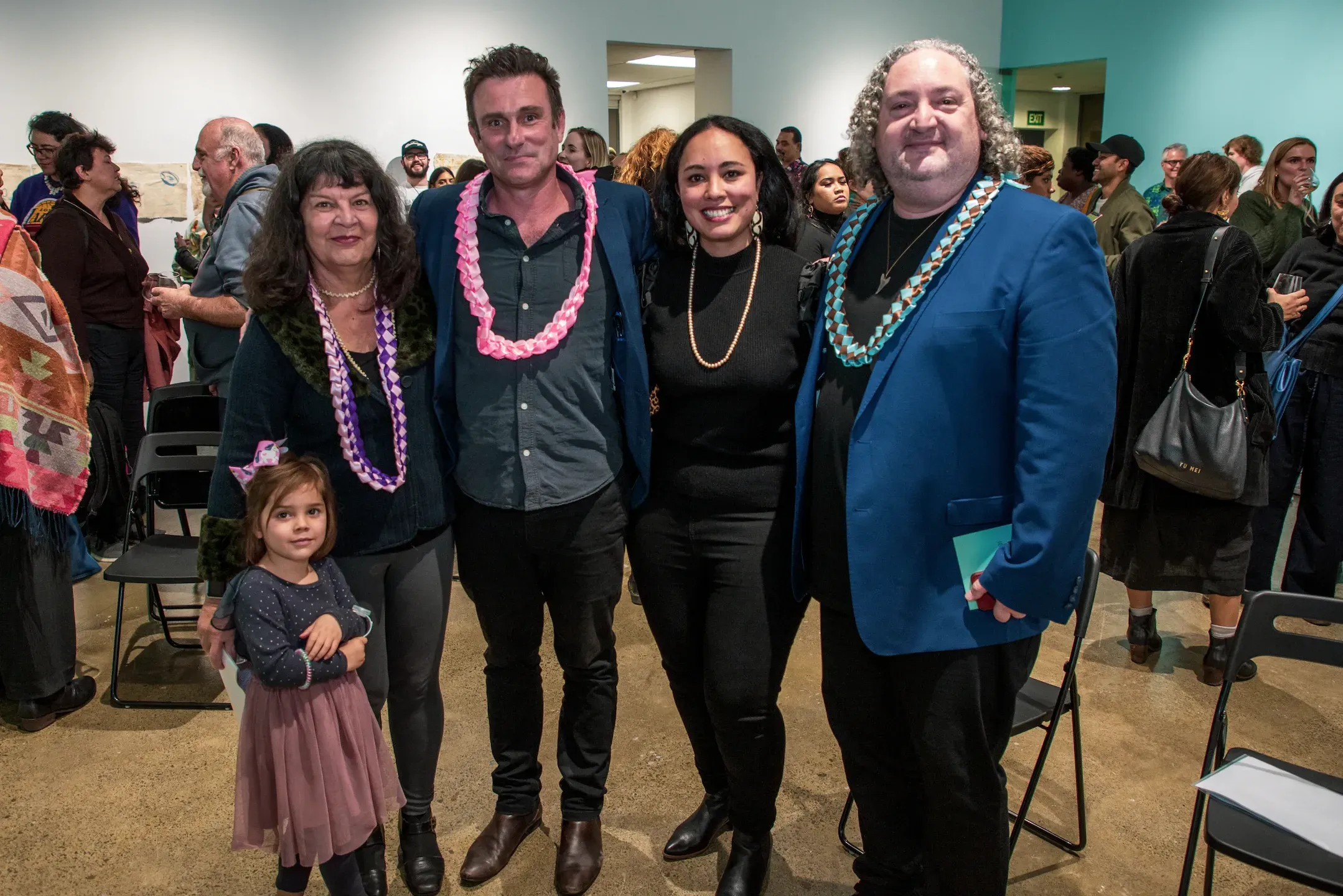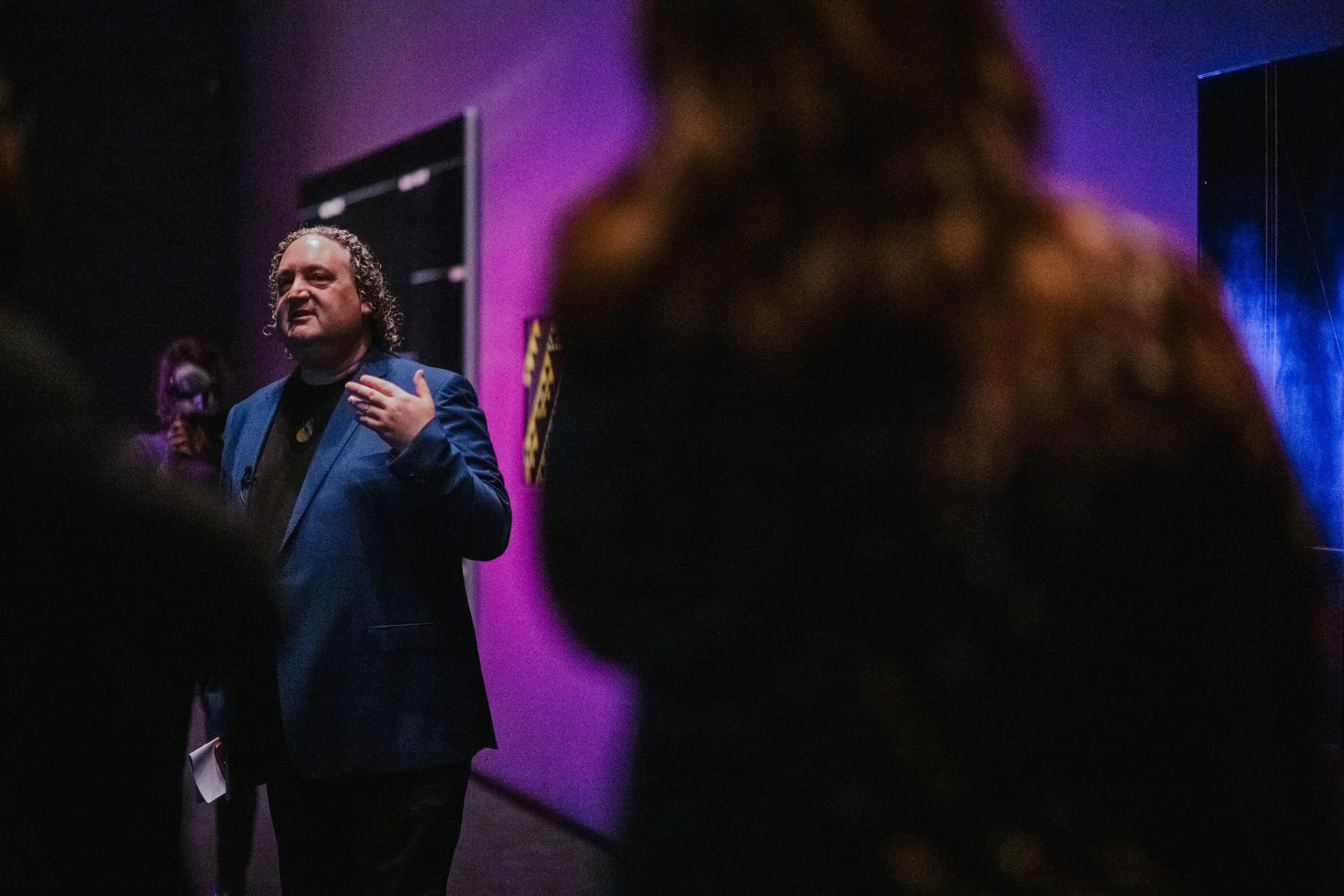Lock, Stock & Borell
Written by
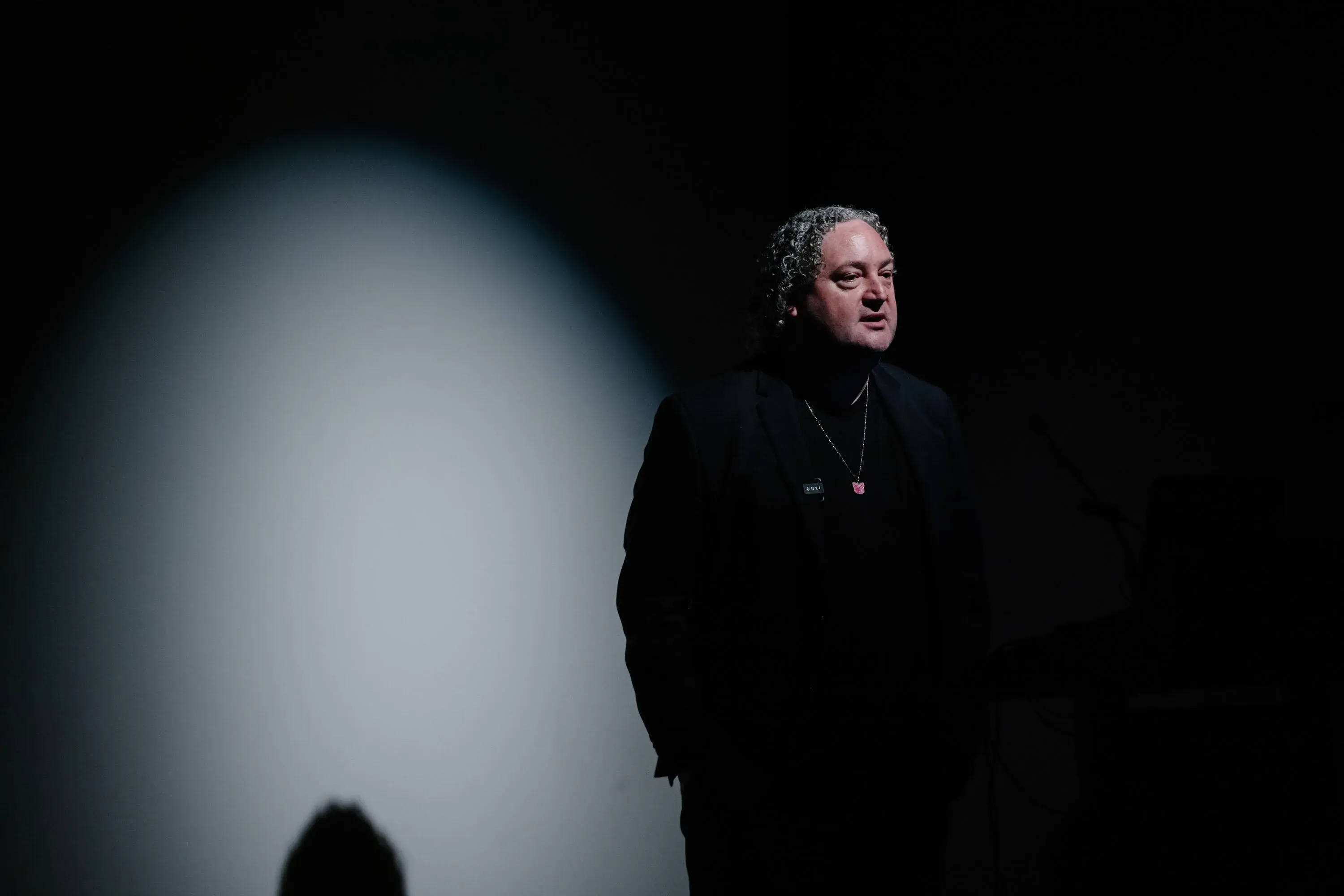
Nigel Borell knows how to inspire change.
He’s been arguably the most talked-about member of the creative community in 2021 for not just the runaway success of the Toi Tū Toi Ora exhibition at Auckland Art Gallery but his powerful stance of walking away from the institution and critically speaking out about the imbalance of power when it comes to curating.
The man who has provoked so many conversations in the last eight months has also sparked a new award.
When the Arts Foundation Laureates for 2021 were being discussed - the selection panel that included admired names like Philip Clarke and Tama Waipara couldn’t shake the feeling Borell’s impact needed to be acknowledged, even though it didn’t sit within their usual award offerings.
So they made up a new one.
It’s called the Moment in Time He Momo Award - but much like the Academy Awards has the Oscar, this one might as well be the Nigel.
It comes with $25,000 and a place in the elite club of Arts Laureates - with the new weapon of creative recognition only to be pulled out when the panel essentially deems the contributor’s mahi has had such a profound impact on the arts that it can’t be ignored.
A joint statement from the panel explains it like this - “when we think about moments that have truly moved the needle on Aotearoa's arts landscape – Toi Tū Toi Ora was one of them. It has redefined the story we tell about the arts in this country.”
In case you were living under a cultural rock this year - the unbridled success of this landmark exhibition just cannot be ignored - nor should it.
A quick refresher on the numbers - the largest exhibition in the 133-year history of Auckland Art Gallery Toi o Tāmaki, holding over 300 works by 111 Māori artists. An eye-watering 195,000 visitors over its five months, the most attended exhibition at AAG in 32 years. More than half who attended walked through the gallery doors for the first time - and the percentage of Māori visitors doubled from 7% to 14%.

Toi Tū Toi Ora: Contemporary Māori Art, Installation view, Te Pō. Auckland Art Gallery Toi o Tāmaki. Photo: Paul Chapman.
Borrell (Pirirākau, Ngāi Te Rangi, Ngāti Ranginui, Te Whakatōhea) told The Big Idea “It was pretty bizarre, to be honest and it still is - but in the most beautiful way - how it’s really traversed both Māori and non-Māori in a very profound way. We would hope it would but to see that it is having that effect on people is very rewarding and humbling.”
While the ‘NB: Not Today Coloniser’ badges worn by many Borell supporters on opening night in December 2020 were a sign of things to come, his resignation as the Gallery’s curator of Māori art broke in January, calling for colonial institutions to share power more equally amid “major issues” with the level of control he had in the lead up to Toi Tū Toi Ora (as we covered extensively in the first Lowdown of 2021.)

Photo: Dina Jezdic.
Borrell explains to The Big Idea “I was really just speaking about things that needed to be said. I was in a position to do so and walk that fine line with integrity, where everyone’s mana is still intact but to be critical and be honest about some of the challenges within institutions.
“It wasn’t planned, it was just a moment that was meant to be I suppose. If it’s been a catalyst or the lightning rod for people to see themselves and their own journey reflected then so be it. It probably speaks to a larger moment and movement and much-needed conversation coming to the fore.
“In NZ, we’re very in tune with the rhetoric of biculturalism, we’re not very well practiced at executing it - it’s in practice where the rubber hits the road for the achievement and the outcomes to speak more equally to show that diversity that we talk about so often.
“Sharing power in a more equal manner is an ongoing challenge for us all, not any one institution or sector, that may be what has spoken to people so vividly is that challenge that they experience or see in their own areas of knowledge or job vocation.”

2021 Arts Laureate Nigel Borell. Photo: Arts Foundation.
Borell’s become the poster boy for standing up for your beliefs in the arts community this year, but he’s the first to recognise he’s far from alone in taking such stands.
Fighting against the machine has been happening for years, it’s just finally starting to get more spotlight thanks to Borell’s efforts. It’s drawn praise from hugely respected names like Sir Derek Lardelli.
Speaking to The Lowdown, Sir Derek had this to say about Borell. "Nigel has played an important role in publicly voicing what Māori artists have been experiencing and talking about for decades. His position at one of Aotearoa’s largest galleries has enabled him to speak to a wider audience and raise awareness of issues that affect us all.
“The conversation is one that all New Zealanders need to have. Kia kaha tonu Nigel!"

Nigel Borell discusses Toi Tū Toi Ora. Photo: Paul Chapman, Auckland Art Gallery Toi o Tāmaki.
Kolokesa Mahina-Tuai and Toluma'anave Barbara Makuati-Afitu form Lagi-Maama Academy and Consultancy, who describe their mahi as “decolonising the current eurocentric infrastructures and mindsets within and across our cultural (including arts) landscape” - they know all about the harsh reality of “token, superficial and tick box gestures” and told The Lowdown that the real impact of Borell’s actions is yet to be seen.
“Yes, it is great that the public exposure has made it a hot topic of conversation in the ‘art world’ and that it motivated organisations like The Arts Foundation to establish the A Moment in Time Award with Nigel as its inaugural recipient.
“But how can we avoid making this more than just 'a moment in time' and move to truly embedding te ao Māori ways of knowing and doing that informed Nigel's curatorial approach with Toi Tū Toi Ora? And most importantly to lead by his example of always having his community at the heart of what he does which allows and permits him to lead courageously and strongly.
“The wero has been laid by Nigel for all our cultural (including arts) sector and institutions and what it 'can look like and be' and the template is called Toi Tū Toi Ora!"
As for Borell, he’s just enjoying life as a freelancer - “it’s been a year of being your own boss. It’s been a great year with the (Toi Tū Toi Ora) exhibition and its success, being outside of the institution to enjoy it and embrace everyone’s great experience with it.
“It’s been interesting, people are coming to me with an expectation to have a fair and open conversation now. If anything, we’re coming to the table of discussion open to exploring how we share the idea of power.
“For me it’s been a really healthy lifting the lid of thinking twice about how we might undergo those types of relationships.”

Borell (right) at the opening of Tautai Gallery's Moana Waiwai, Moana Pāti with (from left) Brenda Railey, Tautai Board of Trustees member; Simon Mitchell, Community Manager, Link Alliance; Courtney Sina Meredith, Director, Tautai Contemporary Pacific Arts Trust. Photo: Isoa Kavakimotu.
Along with an arts residency at Oxford Gallery in North Canterbury, Borell’s guest curating two shows for Tautai Gallery in Auckland - the first of which is exhibiting now until 25 September, Moana Waiwai, Moana Pāti which poetically translates to ‘from open seas to the shallow waters’.
And his year like no other will culminate in a true passion project, the inaugural exhibition of the Wairau Māori Art Gallery in Whangārei on 3 December.
“The Wairau Māori Art Gallery is very much part of that whole movement whereby it’s a gallery for Māori artists, Māori curators to present and own that space, tell our stories and being forthright about doing that. It’s a really important moment and a really exciting time.”
Praise aplenty
It’s been a big moment for eight other creatives as they also join the Arts Laureate list.
Chris Forster got to sit down with Māori artist Brett Graham and his Arts Icon father Fred shortly after Brett’s esteemed dad discovered the news of his son’s new title in a lovely story here on The Big Idea. Brett also spoke to RNZ about his work Tai Moana Tai Tangata opening at City Gallery Wellington (after starting out at Govett-Brewster Art Gallery).
Wellington pair photographer Harry Culy and performing arts pioneer Nina Nawalowalo are featured in a proud Dominion Post article for their accolades. Culy speaks of his pride in being the only photographer on this year’s list and how his hometown has inspired his work, including his newest project Mirror City, “a gothic love letter to my hometown”.
Nawalowalo, whose crucial work in bringing real issues to wider audiences was highlighted here in The Big Idea earlier this year.
Rangi Kipa’s mahi was given a TV spotlight by Seven Sharp discussing growing up in Wairoa and his role in an amazing carving created for New Plymouth’s redesigned airport.
Maisey Rika’s another laureate celebrated for her passion for te ao Māori - she spoke to Nine to Noon’s Katheryn Ryan on her music career.
Documentary filmmaker Florian Habicht’s big year continues after the success of James & Isey at the box office - he discussed the process and his journey with The Big Idea.
Walter triumph

Mata Aho Collective and Maureen Lander, Atapō, installation view, Auckland Art Gallery Toi o Tāmaki, 2021. Photo: Supplied.
Speaking of joining elite company - a great big ka rawe and congratulations to Mata Aho Collective and collaborator Maureen Lander for being awarded the 2021 Walter Prize for their work Atapō.
What’s described at Aotearoa’s most prestigious contemporary art award - which also comes with $50,000 - was decided in the weekend at Auckland Art Gallery. The other finalists were Fiona Amundsen, Sonya Lacey and Sriwhana Spong.
International judge, Kate Fowle, Director of New York’s MoMA PS1 wasn’t able to physically attend and judge the work and felt it wasn’t appropriate for her to “to award the prize based on a personal selection of one work over another.”
So instead, Fowle made her call based on “a celebration of the inspiration they bring through their sustained collective practices, as well as for the potential futures they offer in their collaborative thinking and generative processes. For me, these qualities, together with the commitment the artists have to creating proximity, signal the work that needs to be done by all of us in the coming years, regardless of the barriers we encounter.”
Mata Aho Collective - made up of Erena Baker, Sarah Hudson, Bridget Reweti and Terri Te Tau, are quoted in this Stuff article as preferring to be known as one body rather than individual artists - “It has been a real honour to be part of a show that involves so many art powerhouses.”
The biennale Walter Prize was due to be handed out last year but was delayed due to the pandemic - and its long build-up wasn’t without its controversy. The Award’s curator Natasha Conland assured that there was no conflict of interest as it came to light two of the four jury members were closely involved with two of the exhibitions nominated as finalists - of which Mata Aho Collective and Lander were not one.
The Walter Prize exhibition is on display at Auckland Art Gallery until 5 September.
Snap happy

One of Jo Frances' winning family portrait. Photo: Jo Frances.
While we’re celebrating awards - Wellington photographer Jo Frances is building quite the reputation at the Nikon Iris Awards.
She’s won the Family Photography section at the National photography awards for the third year running - Frances spoke to Jesse Mulligan about how she finds her award-winning subjects and love of photographing of “redheads” (of which she is one).
You can see all the winners' work here.
No Reservation?
Surprise, surprise - Taika Waititi’s latest project is already gathering rave reviews.
But for now, that’s all we’ll see - reviews (well, and trailers like below).
The Spinoff’s Chris Schulz looks into the reaction to Reservation Dogs on American network FX - a new comedy series that Waititi co-created, co-wrote and co-produced with indigenous American filmmaker Sterlin Harjo - and it’s largely positive.
But in this age of streaming and “direct from the US” programming, it appears we here in Aotearoa have to wait.
There seems to be no direct plans for it to reach our screens or broadband any time soon, but The Spinoff notes that it could make its way here through Disney+.
Straight in the deep end
There are umpteen school productions happening around the country and while loathe to single one out, what’s happening at Tauranga immersion school Te Wharekura o Mauao is pretty special.
They’re diving in the deep end with their first ever full-scale production Takitimu - one created to spotlight the talents of their students. Veteran performer and director Jason Te Mete of the Tuatara Collective has been a driving force, as the school takes advantage of Creatives in Schools programme funding.
With a school role of only 250 - they’re performing at Baycourt, a venue that can hold twice that, until 13 August. The bilingual performance features a range of storytelling elements - dance, live band, waiata, poetry, comedy, hip hop and haka.


